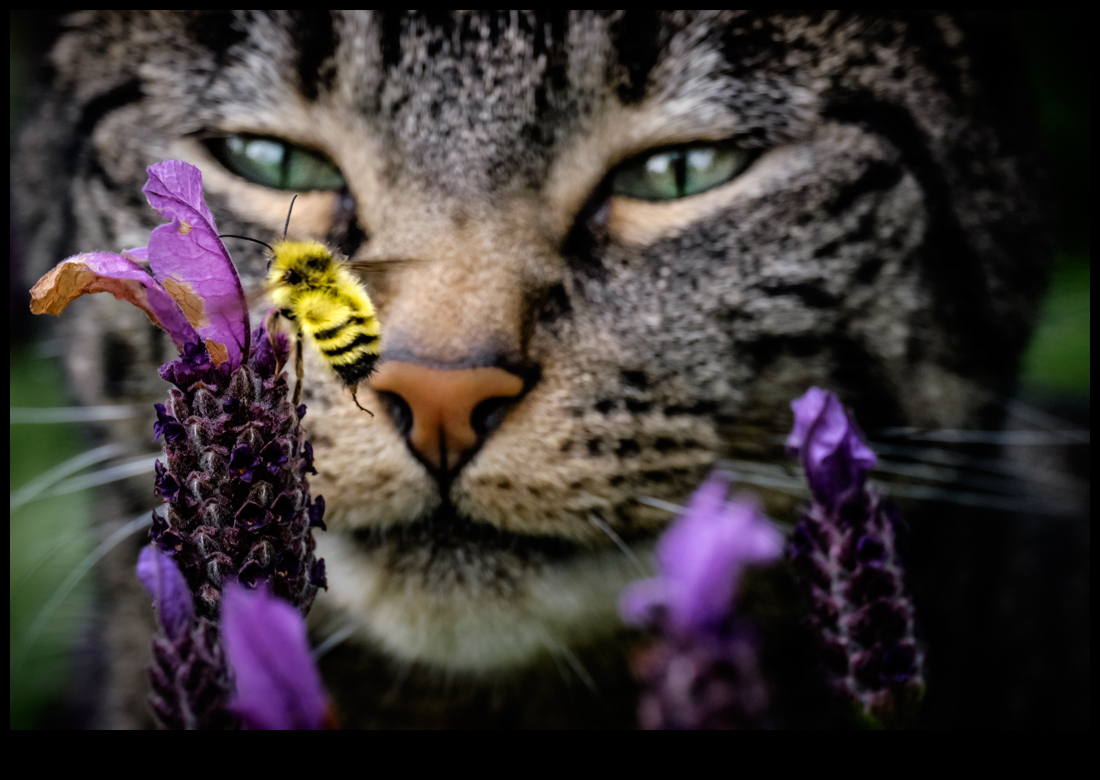The trials and tribulations of capturing bees in flight.
We like to garden. Plain and simple, we like to have a home surrounded by flowers. When we moved into our current digs I had to shovel away about a ton of river stone to make way for a planter under our front window that became home to flowers and grasses that provide colour and visual entertainment from early spring to fall. One of the key elements to this bed is a row of lavender. In 4 summers we are now on our third set of plants. For some reason, while they thrive in the summer, they do not winter well, even when we have a super mild one like this past year. We love them so much that rather than look for something else to go there we just buy new plants every couple of years.
One of the things I love about the lavender is watching the bees flock to it, dancing from flower to flower, as they go about their days work. Our first year here the bees were everywhere. Same with the second. Last year I noticed a big drop in the numbers visiting our front yard and I was worried about the bee die-off happening around the world. I am happy to report that this year they are back in abundance pollinating their way around our yard.
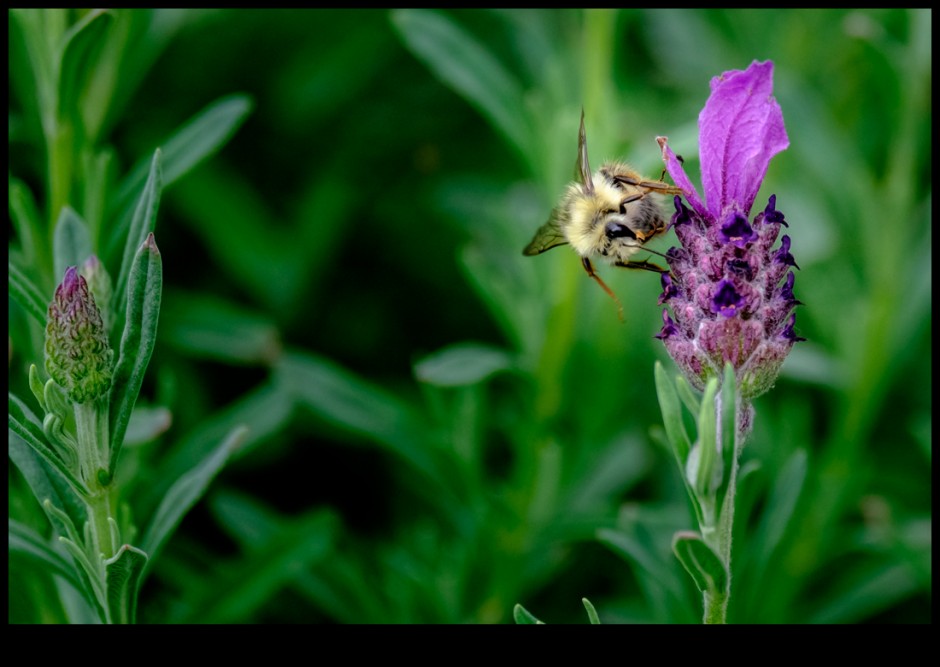
Bee 1 – One of my first attempts -Click any photo for larger images
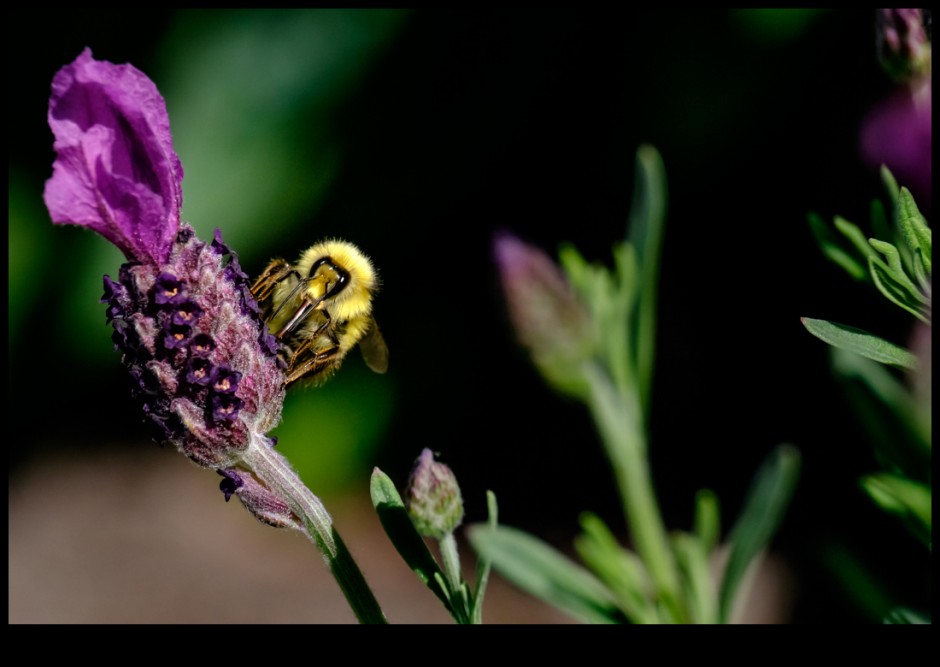
About to drink
One morning a few weeks ago I decided to go out to capture a few frames of some of the bees in action. Using my Fuji X-T1 and Fujinon 55-200 with an 11mm extension tube I thought I could get close enough to get some decent macro-ish type shots. As long as a bee was sitting on the flower this worked great. I could shoot at a nice low-ish ISO and a wide open aperture and get some fairly good shots, but bees like to move, and you would be surprised at how quickly they move around a flower dipping their proboscis into the tiny purple flowers to suck up the nectar. I cranked up the shutter speed and the ISO trying to “freeze” the wings as the bees took off. I soon realized that bees beat their wings so fast that even 1/4000th of a second shutter speed wouldn’t be enough to completely freeze them. I set up a couple of flashes aimed at one flower and had them set to be fired by radio trigger. This meant however that I was confined to sitting and waiting for a bee to land on that one flower, in the right orientation to capture an image of the bee in flight with her wings frozen. To say I am pretty impatient is an understatement, so I decided to scrap the flash idea and I would at least try to slow them down with a high shutter speed.

In profile
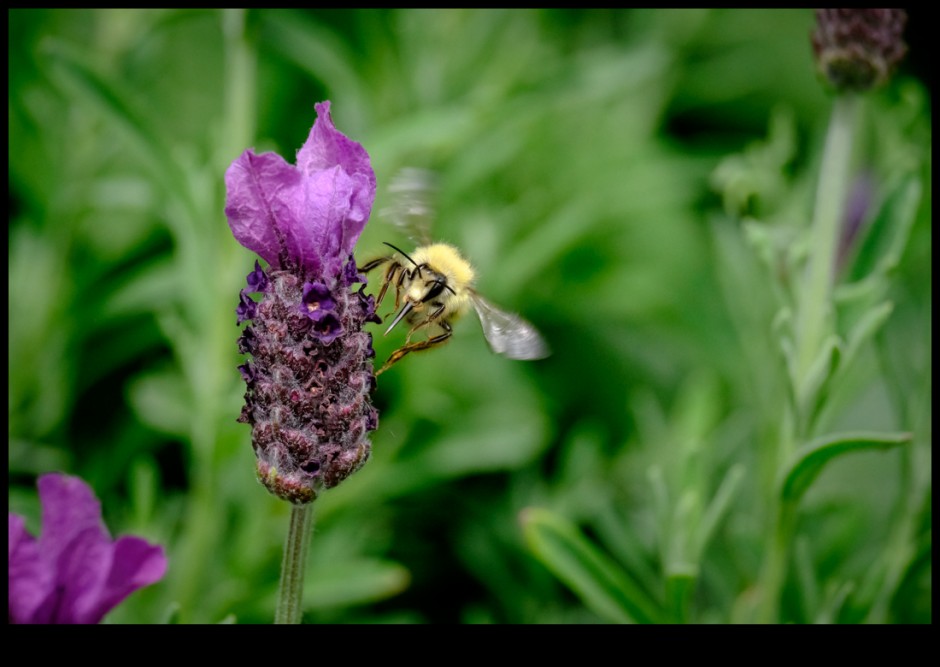
About to take off
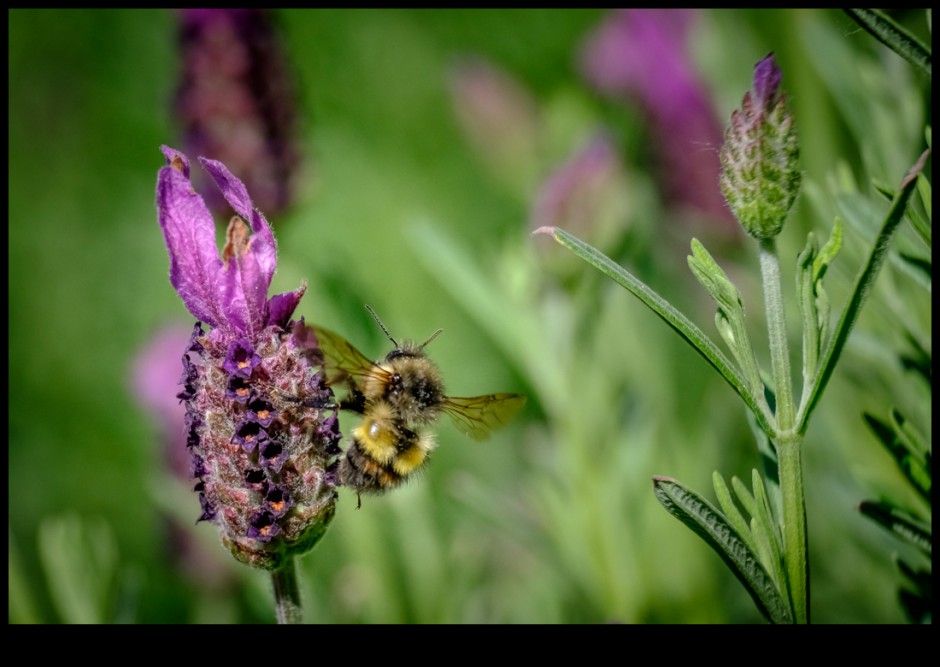
The Release
Another thing I realized is that predicting a bees movements is like predicting next years Stanley Cup winners. Try as you will, but pressing the shutter at the right moment is really just a wild stab in the dark. I will spot a bee on a flower; go and get into position; focus; and then try to guess when it will take off and in which direction. After many, many shots taken long after the bee had departed the flower I decided to take the machine gun approach. This means that after grabbing focus I watch the bee for a few seconds waiting for it to be on the front or side of the flower and then use the camera’s maximum frames per second capacity in the hopes that the bee would take off before the camera’s buffer would fill up. This approach proved slightly better. I was capturing more bees in flight, but using the extension tube was also cutting my depth of field. I could either have nice creamy blurry backgrounds and out of focus bees for 99.9% of my shots or I could increase my aperture for a broader depth of field (About 5-10mm). This approach led to a few more “keepers”. Still not what I was hoping for but better. Am I there yet? No. Not by a long shot. But I’m not done yet. I still get a buzz from bee photography.
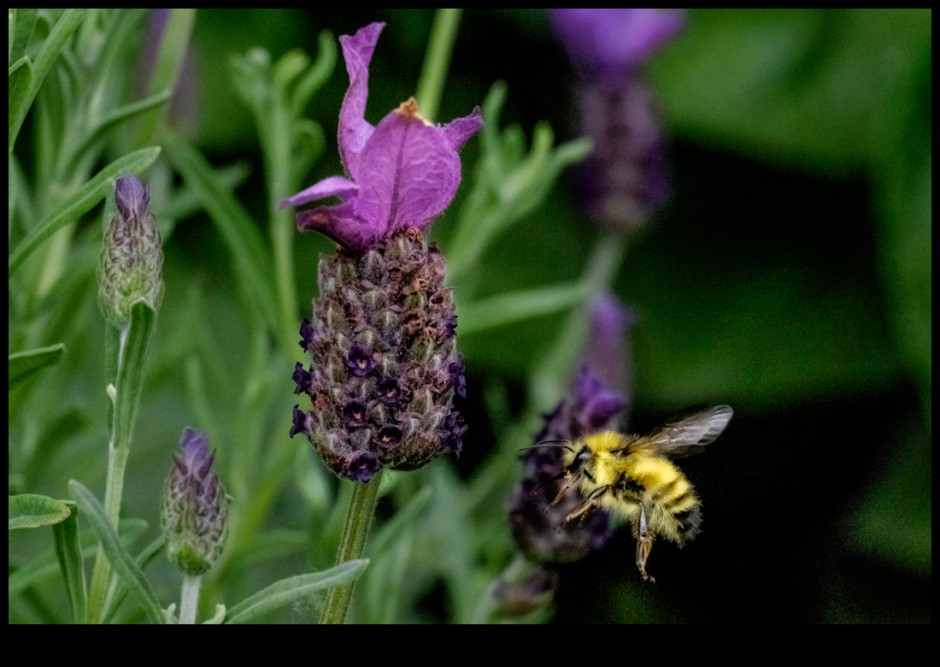
Coming in for landing

Touch Down
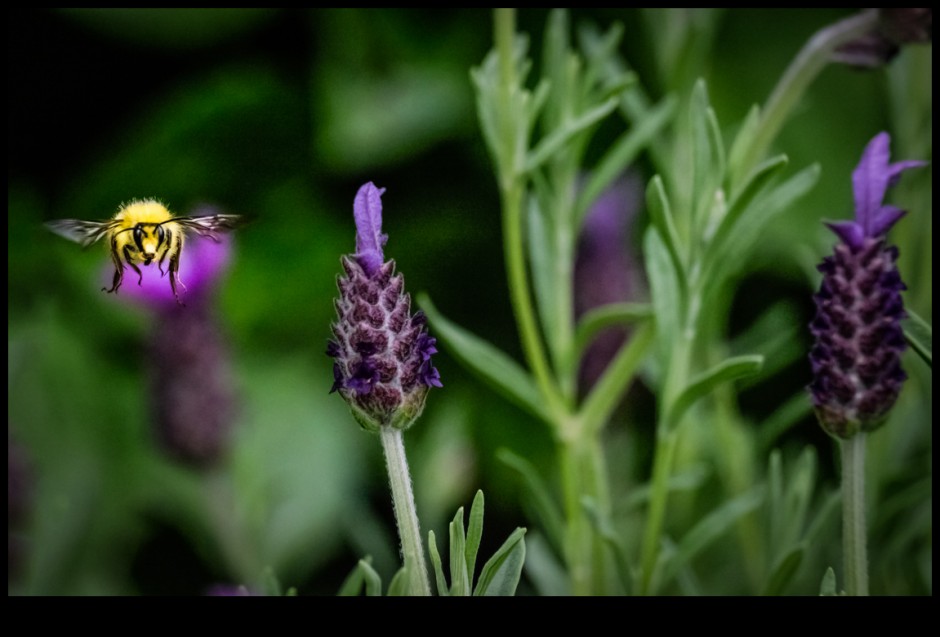
Stare Down
Our cat Bella getting in on the action.

are you looking at me?
All in all I have probably taken close to 1000 pictures so far. Of those I have thrown away about 600 right off the bat because I missed the focus badly, the bee was not in a good position, (Models! Geeze!), or I missed the bee altogether. Then there are lots and lots of pics of a bee sitting on a flower, which can become pretty boring very quickly. (Yes, I know I included 3 here.) That left about 50 shots of the bee in flight which I would label the focus as acceptable. Those I narrowed down to the ones I liked best, regardless of whether I nailed the focus or not.
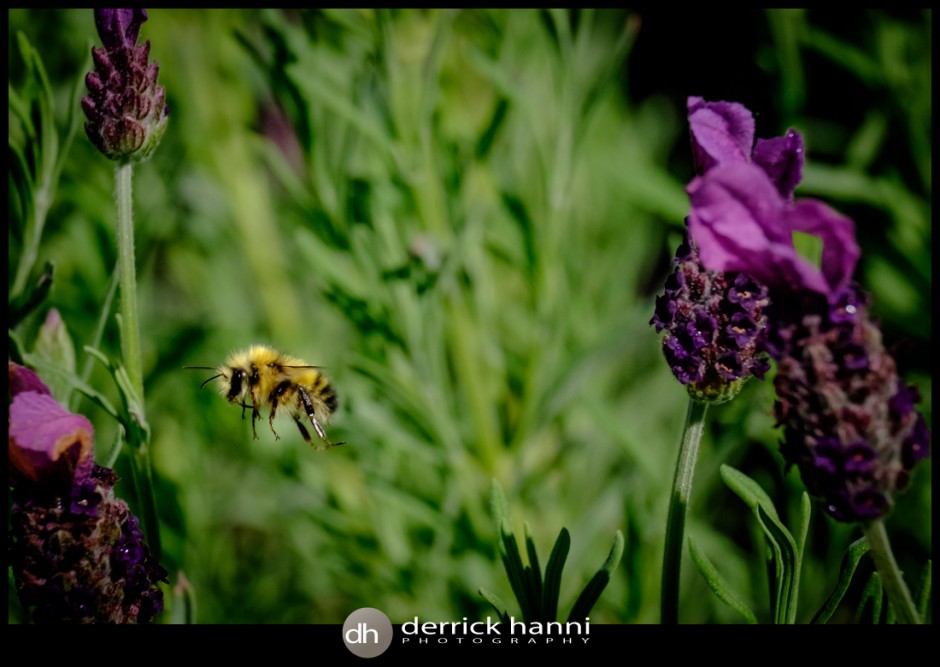
Taking aim
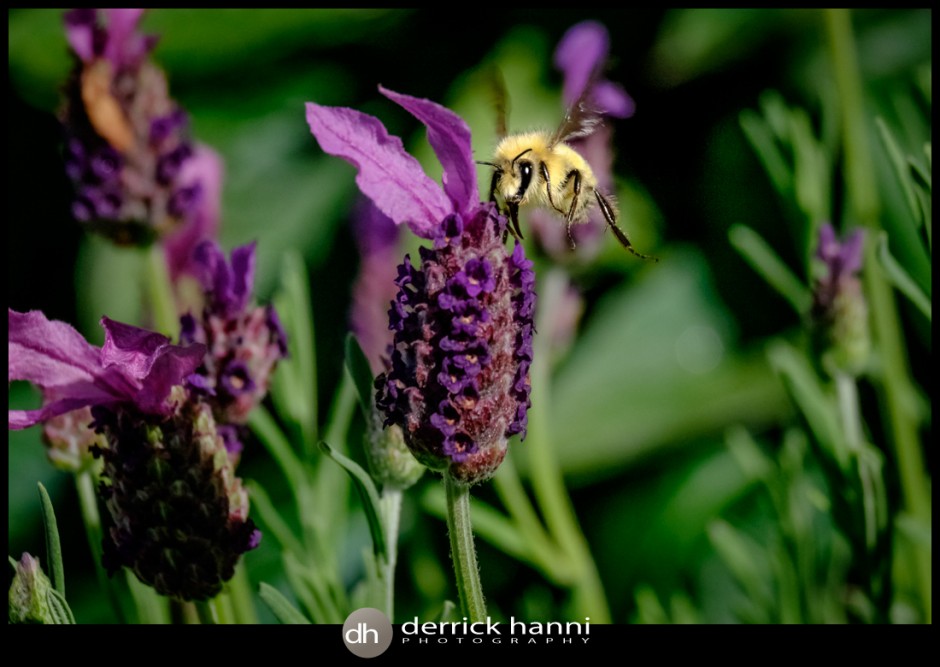
extended proboscis
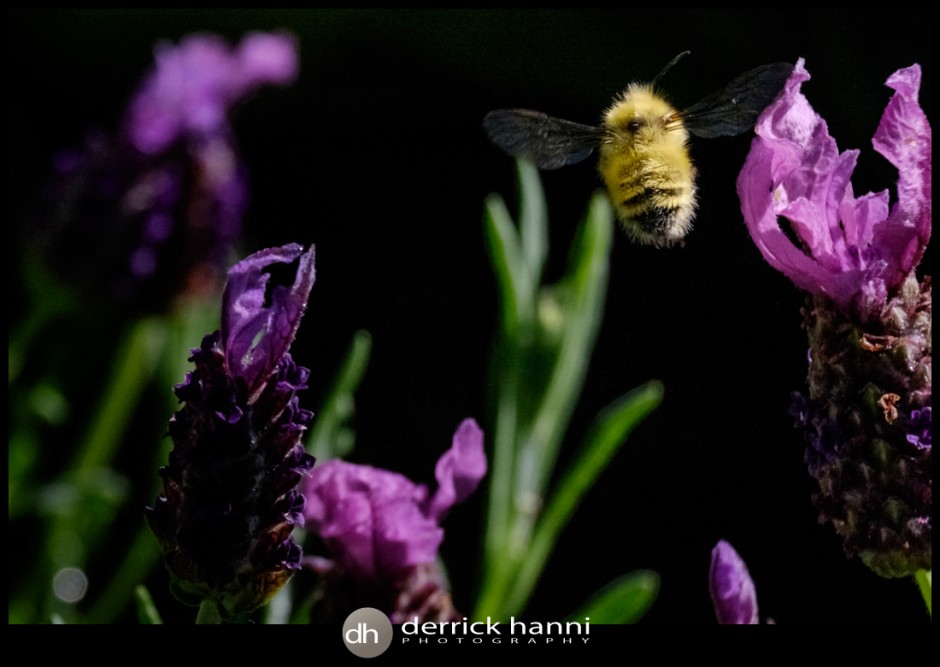
Wings are cool
And finally, I couldn’t resist posting this last one, blurry and all, as it caught the bee doing his business.
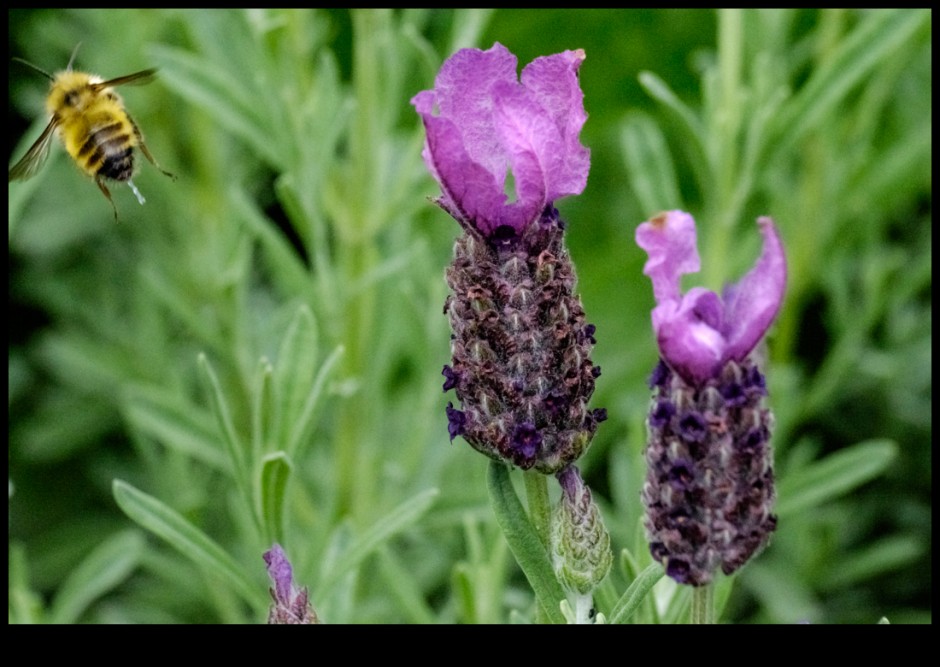
Potty Break

